I have a friend who has been living in England with his family for several years. He is a very talented person who, in addition to his successful homemade cakes business which he runs on a permanent basis, also has a long-standing passion for wood and DIY. The other day she sent me photos of her latest "stunt" asking for my advice. I'll give him the advice right here, but not before I present the whole project.
The weathered garden table
They had an old pine table that had been sitting in the garden for 3 years, battered by sun and rain, during which time the lake had become scaly and mold had appeared in some places. At one point she thought it wouldn't be bad if she turned it into a garden table, where they could sit together for coffee on nice days.
So he set to work. First he bought the necessities: sandpaper in various grits, sanding sponges, paints in various colors, paintbrushes. As it wasn't the first time he had tinkered, the little sanding machine was already in the storeroom. Then came the table. He sanded it very well, first with 40 grit sandpaper, then 80 and 120 grit until he removed all traces of varnish and mold. Then he continued sanding with 180 grit sandpaper to make the surface as smooth and well-prepared as possible.
After sanding, he applied a coat of cream color, Cuprinol county cream (I just told you the action takes place in England ☺), with a paintbrush over the entire surface, waited for the paint to dry, sanded the surface well with 240 grit abrasive sponges and applied another coat of color.
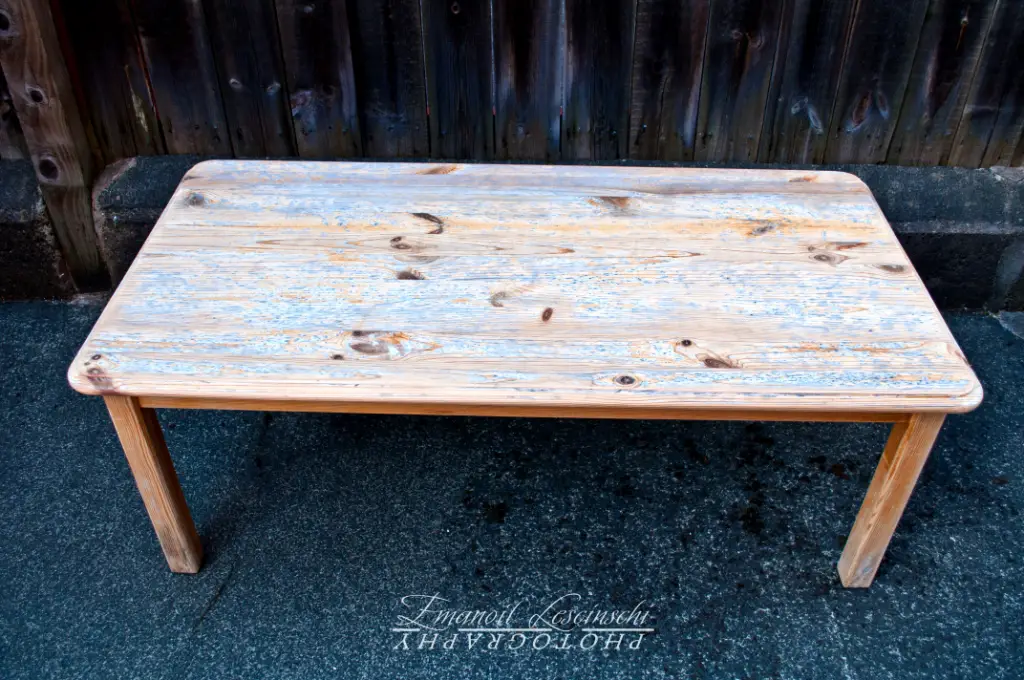
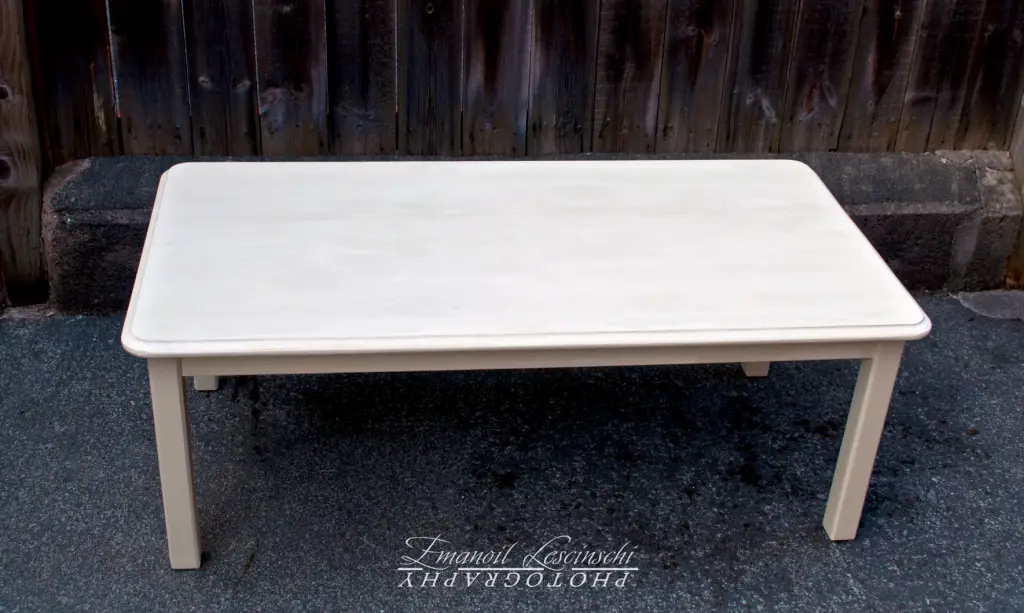
Over this first color, he applied a coat of Cuprinol wild thyme color on the legs and table edge. The rectangle in the center he drew lightly with a carpentry pencil, evenly spaced from the edge - 10 cm, made the joints at the corners and erased the unusable lines with the eraser. Then everything was painted with a brush, without using a liner or paper tape. After drying, he antiqued the edging with 120-grit sandpaper and the table legs with a 200-grit sanding sponge, which he used to get into the hard-to-reach areas.
Now everything was ready to move on to the centerpiece: painting a bouquet of flowers inside the frame. The painting he did all by himself, using 4 more colors - sunny lime, pale jasmine, purple pansy and sweet pea (I know the names of these colors were not necessary, but they sound so good). The flowers she painted them from scratch, meaning no stencil or other helpful crayon drawing, just looking at a cake stand that had similar flowers. At the end, as a personal touch, she applied very little gold paint to the edge of the table top.
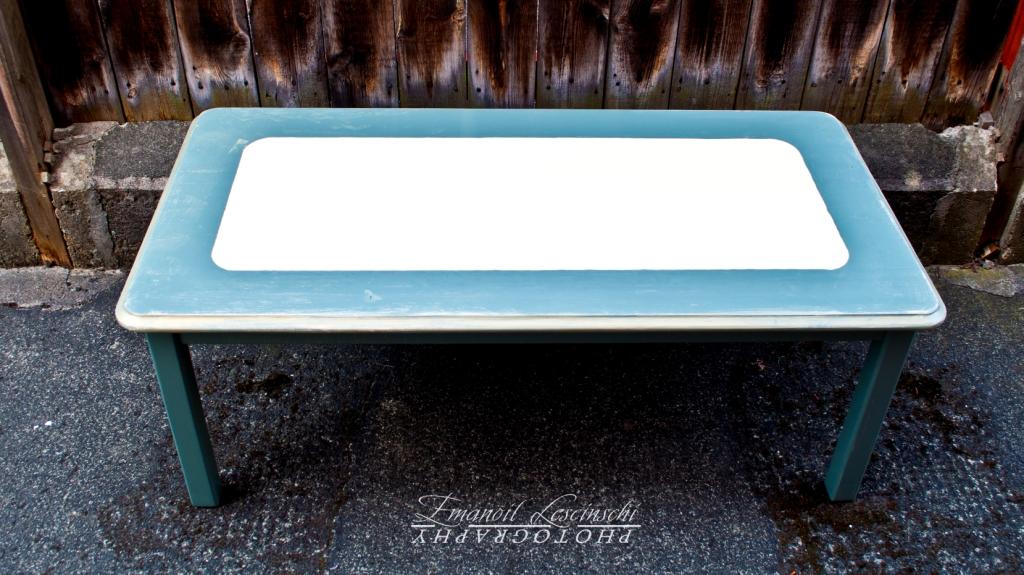
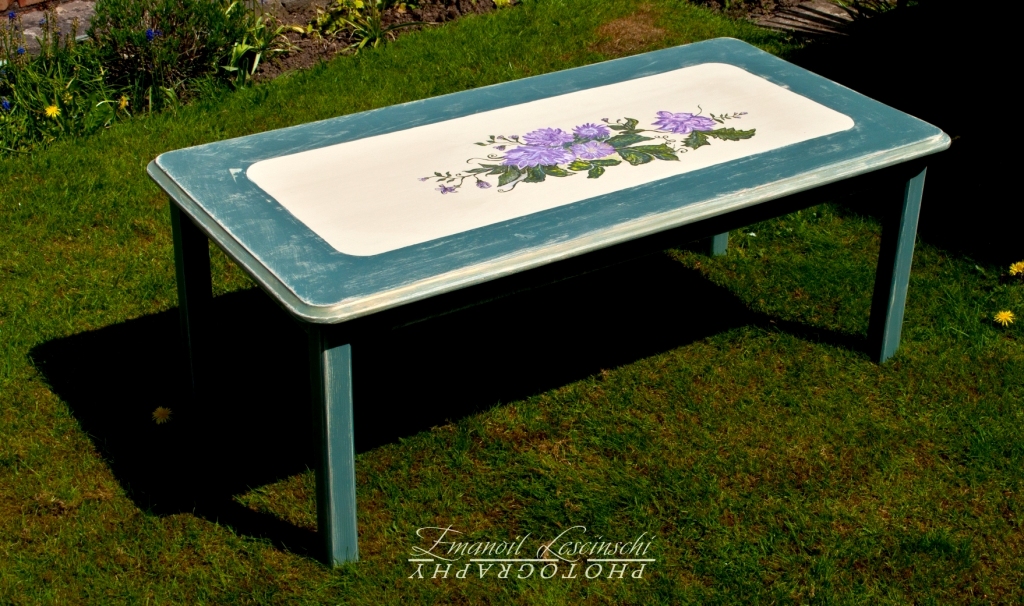
And now, the question
What to do to protect your table and painting so that they last as long as possible outdoors?
My advice is to protect everything with a clear exterior resistant varnish. You need one as colorless as possible so as not to spoil the effect. Unfortunately, exterior varnishes are not totally colorless precisely for the sake of increased resistance. They are formulated with UV absorbers and even colored pigments. But there are also varnishes that, when applied in a thin layer, almost imperceptibly change the colors over which they are applied.
It is very important that the lake does not interact with the colors of the painting. If both the varnish and the colors are water-based, the water in the varnish (the solvent in the varnish) may dissolve the colors and they may migrate, ruining the drawing. It is possible that, even if they are both water soluble, this may not happen. As is the case here, where paints have been used, not colorants, which after drying cannot be dissolved with water. But always test beforehand, separately on a piece of wood, how the two coats interact.
It is safest to use different types of materials, i.e. if you have painted with water-based colors, protect with solvent-based varnish and vice versa.
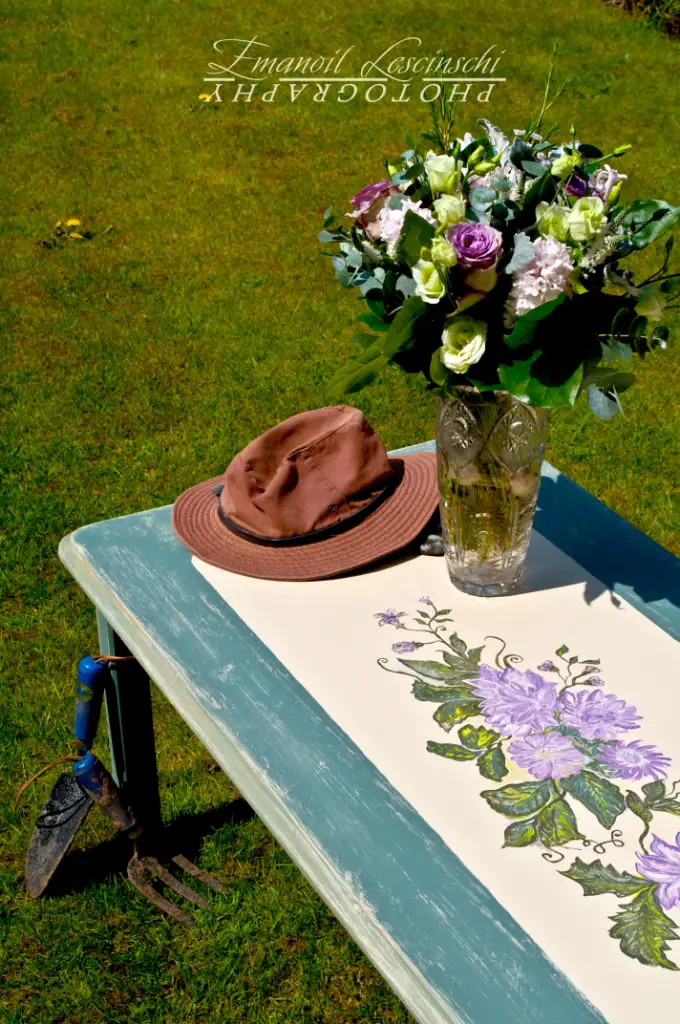
I hope you enjoyed the project and it has awakened your desire to DIY. All I can do is wish you good luck and let you know that I'm here for you whenever you need advice.
























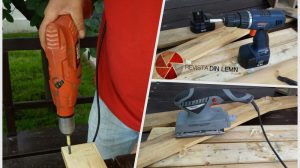


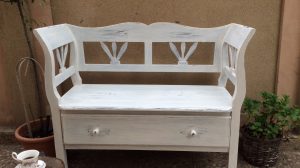
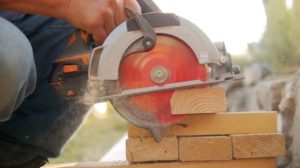
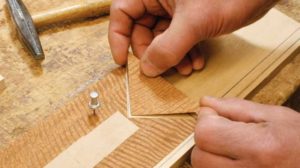

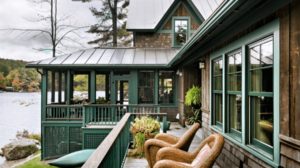
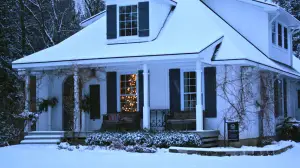



Add comment